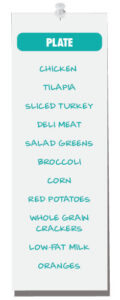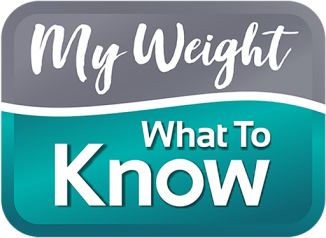By Melinda Maryniuk, MEd, RD, CDCES
We review several different eating approaches in our “Dietitian’s Review” series with the goal of helping people who are looking to evolve their eating style towards better health. It’s important to emphasize that “going on a diet” is very rarely associated with long-term success with weight. We provide these reviews for anyone who wants to improve their health and is looking for an eating approach that will best fit their lifestyle and preferences.
The plate method is an approach to eating that uses a dinner plate as the guide for planning a healthy meal. The aim is to have twice as many vegetables and fruits as meat / protein foods and starchy carbohydrates. In this way, it helps control calories and portions. It also features a smaller plate to also control calories – typically 9 inches (23 cm).
What foods does this diet focus on?
The plate method emphasizes wide variety of healthy foods including whole grains, lean meats and fish, vegetables and fruit, low-fat dairy products and healthy oils (such as olive oil).
Portions are limited by using the plate as a guide:
- In half the plate: fill with non-starchy vegetables and fresh fruit. You could have a big green salad, steamed, roasted or grilled veggies (such as carrots, broccoli, asparagus, spinach, beets, tomatoes, zucchini) and save room to fit in a small piece of fruit or a handful of berries.
- In one quarter of the plate: fill with a lean protein – such as chicken, salmon, turkey, tofu, eggs or lean pork or beef.
- In one quarter of the plate: have a serving of a starchy grain or vegetables such as sweet potatoes, quinoa, brown rice, corn or a whole grain roll.
Is it effective?
While there has not been large research trials conducted on this approach, it is widely accepted by both the US and the Canadian governments to guide healthy eating patterns for its citizens. Research in people with type 2 diabetes shows it is equally effective to the more traditional meal planning methods.
What are some pros and cons?
Pros: Easy to use; no counting calories, no strict rules; lots of flexibility
Cons: Applies mostly to dinner meals; a little more challenging to adapt to breakfast and lunch
How do I learn more?
- Print a copy of the Plate method from the My Weight What to Know website. [NEED LINK]
- Diabetes Meals by the Plate – by Diabetic Living (Recipe ideas that are great for people without diabetes who are controlling calories)
What are a few examples of things I can buy at the grocery store?

Note: There are many approaches to weight loss that can be successful for people. My Weight – What to Know does not recommend a particular diet, but is happy to share facts about a variety of approaches. As with all meal planning approaches, regular exercise is recommended.
To find a physician near you who specializes in weight management, click here.
Get a weekly text to help you stay on track with your health goals! Click here to sign up.
This article was sponsored by Novo Nordisk Canada. All content is created independently by My Weight – What To Know with no influence from Novo Nordisk.
